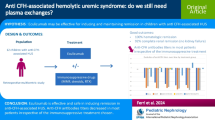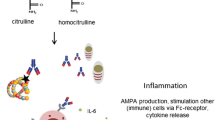Abstract
Systemic lupus erythematosus (SLE) is a prototype autoimmune disease characterized by systemic inflammation and autoantibody production. Anti-MBL autoantibodies have been studied in SLE for their possible effect on MBL levels and functional activity. This study aimed at detection of anti-MBL autoantibodies in Indian SLE patients and evaluates their relationship with related immunological parameters. Two hundred diagnosed SLE patients from Western India were included in the study where 87 patients were lupus nephritis (LN) (43.5 %) and remaining (56.5 %) were non-LN. Disease activity was assessed using the Systemic Lupus Erythematosus Disease Activity Index (SLEDAI). Anti-MBL autoantibodies to IgG and IgM isotypes, anti-C1q autoantibodies, MBL levels and circulating immune complex levels were detected by ELISA. C3, C4 and CRP levels were detected by nephelometer. Anti-MBL autoantibodies were detected in 52 % SLE patients, where 55 % had IgG-anti-MBL, 33.8 % had IgM-anti-MBL and 11.3 % had both subclasses. Low MBL levels were present in 64.4 % anti-MBL positives as compared with 61.5 % in anti-MBL negatives. Among anti-MBL positives, 74 % had anti-C1q antibodies, whereas 41.7 % of anti-MBL negatives had anti-C1q autoantibodies (p = 3.45E06). An inverse correlation was observed between serum MBL and CIC levels. A statistically significant difference was noted between anti-MBL positives and anti-MBL negative patients with hsCRP levels (p = 0.002). Occurrence of infections was higher among anti-MBL positives (65 %) as compared with anti-MBL negatives (35 %). The difference between SLEDAI scores among anti-MBL positive and negative groups was statistically insignificant. Anti-MBL autoantibodies in SLE patients can influence functional activity of MBL and have a significant role in SLE disease pathogenesis.

Similar content being viewed by others
References
Shoenfeld Y, Szyper-Kravitz M, Witte T, Doria A, Tsutsumi A, Tatsuya A et al (2007) Autoantibodies against Protective Molecules—C1q, C-reactive protein, serum amyloid P, mannose-binding lectin, and apolipoprotein A1 prevalence in systemic lupus erythematosus. Ann NY Acad Sci 1108:227–239
Turner MW, Hamvas RM (2000) Mannose-binding lectin: structure, function, genetics and disease associations. Rev Immunogenet 2:305–322
Lu JH, Thiel S, Wiedemann H, Timpl R, Reid KB (1990) Binding of the pentamer/hexamer forms of mannan-binding protein to zymosan activates the proenzyme C1r2C1s2 complex, of the classical pathway of complement, without involvement of C1q. J Immunol 144:2287–2294
Dahl MR, Thiel S, Matsushita M, Fujita T, Willis AC, Christensen T, Vorup-Jensen T, Jensenius JC (2001) MASP-3 and its association with distinct complexes of the mannan-binding lectin complement activation pathway. Immunity 15:127–135
Wong N, Sim RB (1997) Comparison of the complement system protein complexes formed by C1q and MBL. Biochem Soc Trans 25(1):41S
Kelley JM, Edberg JC, Kimberley RP (2010) Pathways: strategies for susceptibility genes in SLE. Autoimmu Rev 9:473–476
Monticielo OA, Mucenic T, Xavier RM, Brenol JCT, Chies JAB (2008) The role of mannose-binding lectin in systemic lupus erythematosus. Clin Rheumatol 27:413–419
Pradhan V, Surve P, Ghosh K (2010) Mannose binding lectin (MBL) in autoimmunity and its role in systemic lupus erythematosus (SLE). J Assoc Physicians India 58:688–690
Saevarsdottir S, Steinsson K, Ludviksson BR, Grondal G, Valdimarsson H (2007) Mannan-binding lectin may facilitate the clearance of circulating immune complexes—implications from a study on C2-deficient individuals. Clin Exp Immunol 148:248–253
Takahashi R, Tsutsumi A, Ohtani K, Goto D, Matsumoto I, Ito S et al (2004) Anti-mannose binding lectin antibodies in sera of Japanese patients with systemic lupus erythematosus. Clin Exp Immunol 136:585–590
Schwaeble W, Dahl MR, Theil S, Stover C, Jensenius JC (2002) The mannan-binding lectin associated serine proteases (MASPs) and Map19: four components of the lectin pathway activation complex encoded by two genes. Immunobiology 205:455–466
Hockberg MC (1997) Updating the American College of Rheumatology revised criteria for the classification of systemic lupus erythematosus. Arthritis Rheum 40:1725
Bombardier C, Gladmsn FF, Urowit MB, Caron D, Chang CH (1995) Derivation of SLEDAI: a disease activity index for lupus patients. The committee on prognosis studies in SLE. Arch Rheum 35:630–640
Weening JJ, Agati VD, Schwartz MM, Seshan SV, Alpers CE, Appel GB (2004) The classification of glomerulonephritis in systemic lupus erythematosus revisited. J Am Soc Nephrol 15(2):241–250
Mok MY, Jack DL, Lau CS, Fong DYT, Turner MW, Isenberg DA et al (2004) Antibodies to mannose binding lectin in patients with systemic lupus erythematosus. Lupus 13:522–528
Sherer Y, Gorstein A, Fritzler MJ, Shoenfeld Y (2004) Autoantibody explosion in systemic lupus erythematosus: more than 100 different antibodies found in SLE patients. Semin Arthritis Rheum 34:501–537
Seelen MA, Trouw LA, Van der Hoorn JWA, Fallaux-Van den Houten FC, Huizinga TWJ, Daha MR et al (2003) Autoantibodies against mannose-binding lectin in systemic lupus erythematosus. Clin Exp Immunol 134:335–343
Daha MR (2008) Pathogenic role of auto-antibodies against complement components in systemic lupus erythematosus. Lupus 17:385–388
Marto N, Bertolaccini ML, Calabuig E, Hughes GR, Khamashta MA (2005) Anti-C1q antibodies in nephritis: correlation between titers and renal disease activity and positive predictive value in systemic lupus erythematosus. Ann Rheum Dis 64:444–448
Selander B, Martensson U, Weintraub A, Holmström E, Matsushita M, Thiel S et al (2006) Mannan-binding lectin activates C3 and the alternative complement pathway without involvement of C2. J Clin Invest 116:1425–1434
Horak P, Zadrazil J, Ciferska H, Hermanova Z (2009) Antibodies against complement system in SLE and their potential diagnosis utility. Curr Rheumatol Rev 5:58–63
Williams RC Jr, Harmon ME, Burlingame R, Du Clos TW (2005) Studies of serum C-reactive protein in systemic lupus erythematosus. J Rheumatol 32:454–461
Acknowledgments
We are grateful to the Director General, Indian Council of Medical Research for allowing us to conduct this study in Indian SLE patients and we thank Department of Biotechnology (DBT), Government of India for the financial support.
Author information
Authors and Affiliations
Corresponding author
Rights and permissions
About this article
Cite this article
Pradhan, V., Mahant, G., Rajadhyaksha, A. et al. A study on anti-mannose binding lectin (anti-MBL) antibodies and serum MBL levels in Indian systemic lupus erythematosus patients. Rheumatol Int 33, 1533–1539 (2013). https://doi.org/10.1007/s00296-012-2588-9
Received:
Accepted:
Published:
Issue Date:
DOI: https://doi.org/10.1007/s00296-012-2588-9




